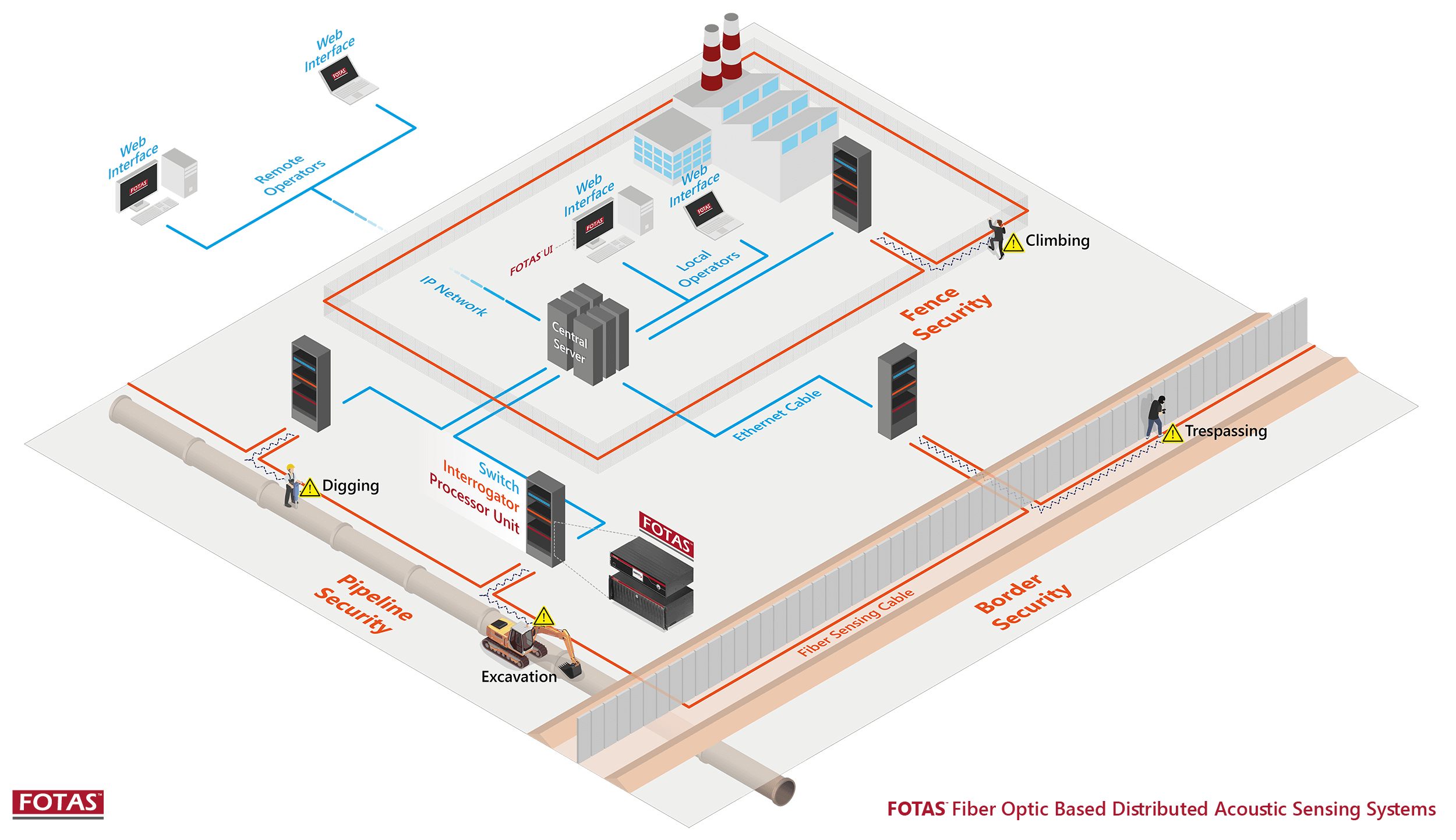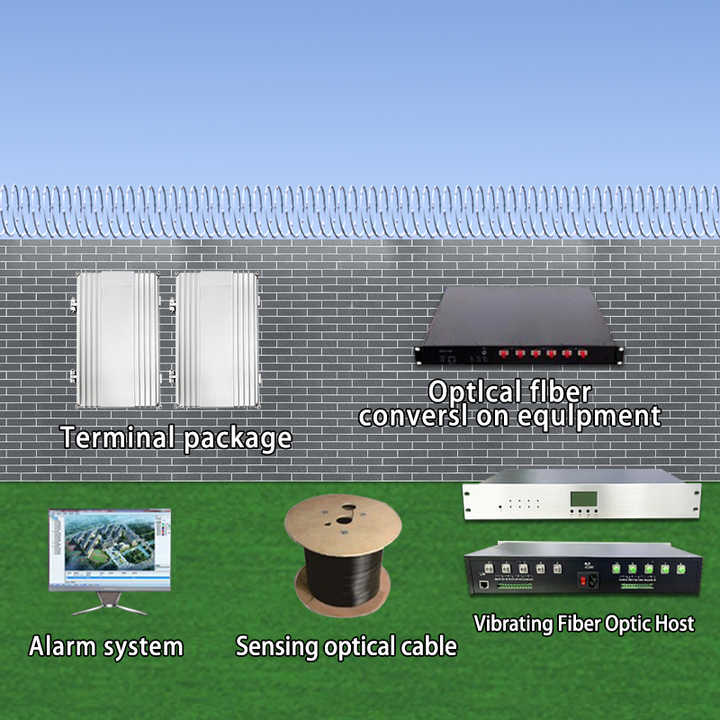Boost Your Security With Advanced Fiber Optic Safety Solutions
In an era where safety is critical, innovative fiber optic safety and security systems provide an engaging service for enhancing security throughout numerous environments. These systems not just boast premium data transfer and speed for high-resolution surveillance however likewise supply remarkable resilience against exterior disturbances. As companies significantly look for trustworthy ways to safeguard their assets, the combination of ingenious technologies like AI and IoT within fiber optic frameworks raises essential inquiries regarding their performance compared to standard systems. What implications do these developments hold for future safety measures?
Benefits of Fiber Optic Safety
Harnessing the benefits of fiber optic modern technology dramatically improves security systems throughout numerous applications. Among the key advantages is the increased data transfer ability, permitting the transmission of big amounts of data at broadband. This is specifically crucial for real-time video monitoring, where high-resolution feeds can be sent without latency, making certain prompt feedback abilities.
In addition, fiber optics exhibit premium resistance to electromagnetic interference, which is vital in atmospheres with possible signal interruptions. This reliability guarantees constant efficiency in vital safety operations. Fiber optic cords are much less vulnerable to tapping and unapproved accessibility compared to traditional copper electrical wiring, thus improving data stability and confidentiality.
An additional significant advantage is the resilience of fiber optic systems; they are much more immune to ecological aspects such as wetness, temperature fluctuations, and corrosive substances. This strength translates to lower maintenance expenses and longer life expectancies for protection installments.
Last but not least, the lightweight nature of fiber optic cables assists in less complicated installment and directing, particularly in complicated infrastructures (fiber optic security system). Eventually, the combination of fiber optic innovation right into safety systems not only strengthens protection actions but also maximizes operational effectiveness
Secret Attributes to Consider
When evaluating fiber optic protection systems, several essential attributes should be taken into consideration to make sure optimal performance and performance. Initially, assess the system's discovery variety and level of sensitivity; a substantial array enables keeping an eye on big areas, while high sensitivity makes certain that even small disturbances are discovered without delay.
Next, take into consideration the integration abilities of the system. A fiber optic safety system need to perfectly interface with existing safety and security actions such as cams and alarm systems, producing a cohesive protection network.
Resilience and ecological resistance are also critical attributes. Make sure that the system is developed to withstand extreme weather and potential physical risks, as this will certainly prolong its operational lifespan.

Last but not least, look into the scalability of the system. A robust fiber optic security system ought to be quickly expanding to accommodate future requirements without significant overhauls. By very carefully considering these features, you can pick a fiber optic security option that enhances safety and security and security in your atmosphere.
Installation Refine Review
To efficiently implement a fiber optic security system, an organized installation process is Homepage important. This process begins with a comprehensive site assessment to establish the specific safety demands and to identify ideal places for fiber optic cables and safety tools. Following this evaluation, the installation group will certainly create an in-depth plan, consisting of cable television paths, essential devices, and compliance with neighborhood laws.
Following, the setup entails laying the fiber optic cables, guaranteeing they are safeguarded from ecological variables and physical damage. Appropriate handling methods are essential, as fiber optic wires are sensitive and can be easily damaged. After the cabling is set up, connectors and discontinuations are meticulously finished to guarantee signal honesty.
The succeeding phase contains installing safety and security devices such as video cameras, motion detectors, and alarm systems, all incorporated with the fiber optic network. Rigorous screening is conducted to verify that all parts are operating properly and to make sure optimum performance.

Comparing Fiber Optic to Typical Solutions
The development of security modern technology has led to significant developments in the contrast between fiber optic systems and home typical copper-based systems. Fiber optic systems make use of light to send data, supplying premium bandwidth and rate contrasted to their copper counterparts. This leads to improved data transmission abilities, making fiber optics suitable for high-resolution video clip security and real-time monitoring.
Additionally, fiber optic wires are immune to electromagnetic disturbance, minimizing the possibility of signal degradation triggered by outside aspects. This particular ensures consistent performance, also in difficult environments. In contrast, conventional copper systems are much more vulnerable to interference, leading to potential susceptabilities in safety and security applications.
Sturdiness is an additional benefit of fiber optic systems. They are less susceptible to harm from environmental elements such as moisture and temperature level changes, which can jeopardize copper circuitry. Fiber optics are lighter and thinner, permitting for less complicated setup and reduced physical impact.
Nevertheless, conventional systems often tend to have lower preliminary expenses, making them appealing for budget-conscious tasks. While fiber optic systems might need a greater ahead of time investment, their long-lasting advantages-- such as lower maintenance prices and greater integrity-- usually surpass the first expense, placing them as an exceptional selection for modern-day protection requirements.
Future Fads in Safety Modern Technology
Arising trends in security modern technology are positioned to transform the landscape of security and threat detection - fiber optic security system. As companies increasingly face advanced risks, innovations such as expert system get redirected here (AI) and artificial intelligence (ML) are becoming essential to safety systems. These technologies enhance the capacity of fiber optic systems by allowing real-time data evaluation, determining anomalies, and automating responses to prospective violations
Additionally, the integration of the Net of Points (IoT) is reinventing security frameworks. IoT gadgets can offer comprehensive situational awareness and assist in seamless interaction between various protection components. This interconnectedness enables extra effective monitoring and faster occurrence reaction times.
Biometric authentication is likewise obtaining energy, offering a greater degree of protection via unique physical attributes. As this modern technology develops, it is likely to be integrated right into fiber optic systems for boosted accessibility control.
Conclusion
In conclusion, progressed fiber optic protection systems represent a significant innovation in security and security modern technology. Their remarkable transmission capacity, resistance to interference, and toughness promote reputable tracking and data integrity. As these systems incorporate AI and IoT capabilities, they enhance the general security structure, ensuring durable security for assets. The transition from traditional systems to fiber optic remedies reflects a growing fad in the direction of much more reliable and effective safety measures in a significantly complex technical landscape.